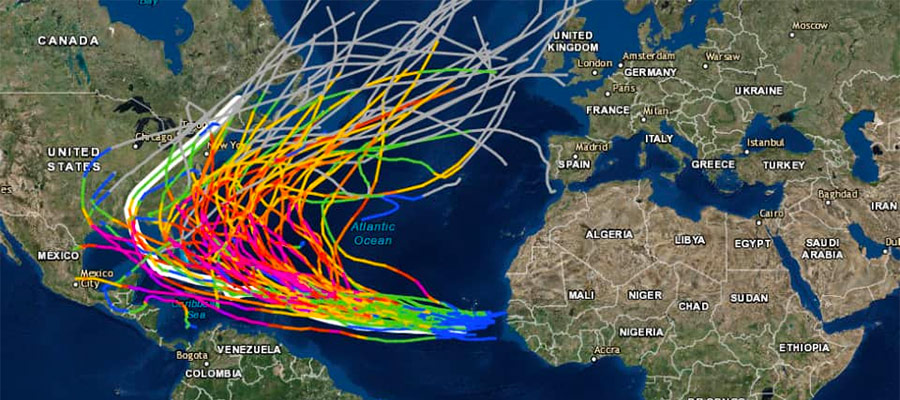The early season forecast by Colorado State University predicts a near-normal or slightly below normal Atlantic Hurricane Season this year, while The Weather Channel predicts a slightly above average season with less activity than 2018. What does that mean? Well, the current weak El Nino may slightly strengthen over the season, which historically has resulted in a slower than usual Atlantic Hurricane Season. See the chart below for what this means for potential storm development. Regardless of the predicted hurricane season activity, it is recommended that all coastal residents on the Gulf and Atlantic should prepare their families and homes every season. Please remember, storm development can occur anytime and is by no means constrained to Hurricane Season running from June 1st to November 30th.
| Average | The Weather Channel 2019 Predictions |
Colorado State University 2019 Predictions |
2018 | |
| Total Named Storms | 12 | 14 | 13 | 15 |
| Hurricanes | 6 | 7 | 5 | 8 |
| Category 3 or higher | 3 | 3 | 2 | 2 |
Before the storms start brewing…
Early in the season make sure to prepare your family and your home in case disaster strikes. Whether you need to gather your medications or update your emergency kit, learn how to create a plan now, and discuss it with all members of your family. Also, don’t forget about our four-legged friends! Most emergency shelters only allow security animals, so make sure to have a plan for your pets.
After a plan is established for your loved ones, take some time to prepare your home. Have the materials ready for boarding up doors and windows, know how to prepare your home for a power outage, and keep your trees and shrubs well-maintained to reduce additional exterior damage.
If you are not under evacuation advisories and you plan to stay home, then fill all bathtubs and sinks with water to ensure you’ll have clean drinking water, and find shelter during the storm on the lowest level and in the most interior room, closet, or hallway as possible. You’ll want to try to put as many walls between you and the outside. Learn more on how to take action during hurricanes.

Monitor and Track
During the storm, you can start to stay ahead of potential storm damage by using a variety of AcuRite weather devices. Additionally, the new AcuRite Atlas Weather Station can measure winds up to 160 mph (a category 5 hurricane!) The station is also offered with an optional lightning sensor which detects strikes within 25 miles of your location.


Watching the wind speeds increase and approaching lightning is an exciting way to see the storm progress, but please put your safety first and comply with local weather office on evacuation advisories. Track the storm yourself by going directly to the source: The National Hurricane Center updates potential storm tracks and storm intensity often.
A great way to monitor your home if you are forced to evacuate is to install leak detectors and indoor temperature and humidity sensors throughout your home. These sensors can be connected to AcuRite Access, which pushes your data to My AcuRite, allowing you to access all the data remotely through the My AcuRite app or website. The Atlas also communicates through My AcuRite, so you’ll be able to keep an eye on both the indoor and outdoor conditions.
After the dust settles…
When local authorities have announced it is safe to return to your home after an evacuation, keep these important tips in mind:
- While cleaning and repairing your property, it is most important to remove and replace any wet building materials.
- Mold spores growing in your home can be the most dangerous to our health after any flooding event. Always wear a filter mask, rubber gloves and boots to avoid contact with the mold as the spores can spread easily.
- Learn more about how indoor humidity sensors from AcuRite can help keep your family safe and healthy after your home has experienced hurricane damage and flooding.
You can find additional resources, tools and tips from the National Weather Service and use the resources available at the Centers for Disease Control and Prevention to clean up after storm damage.
